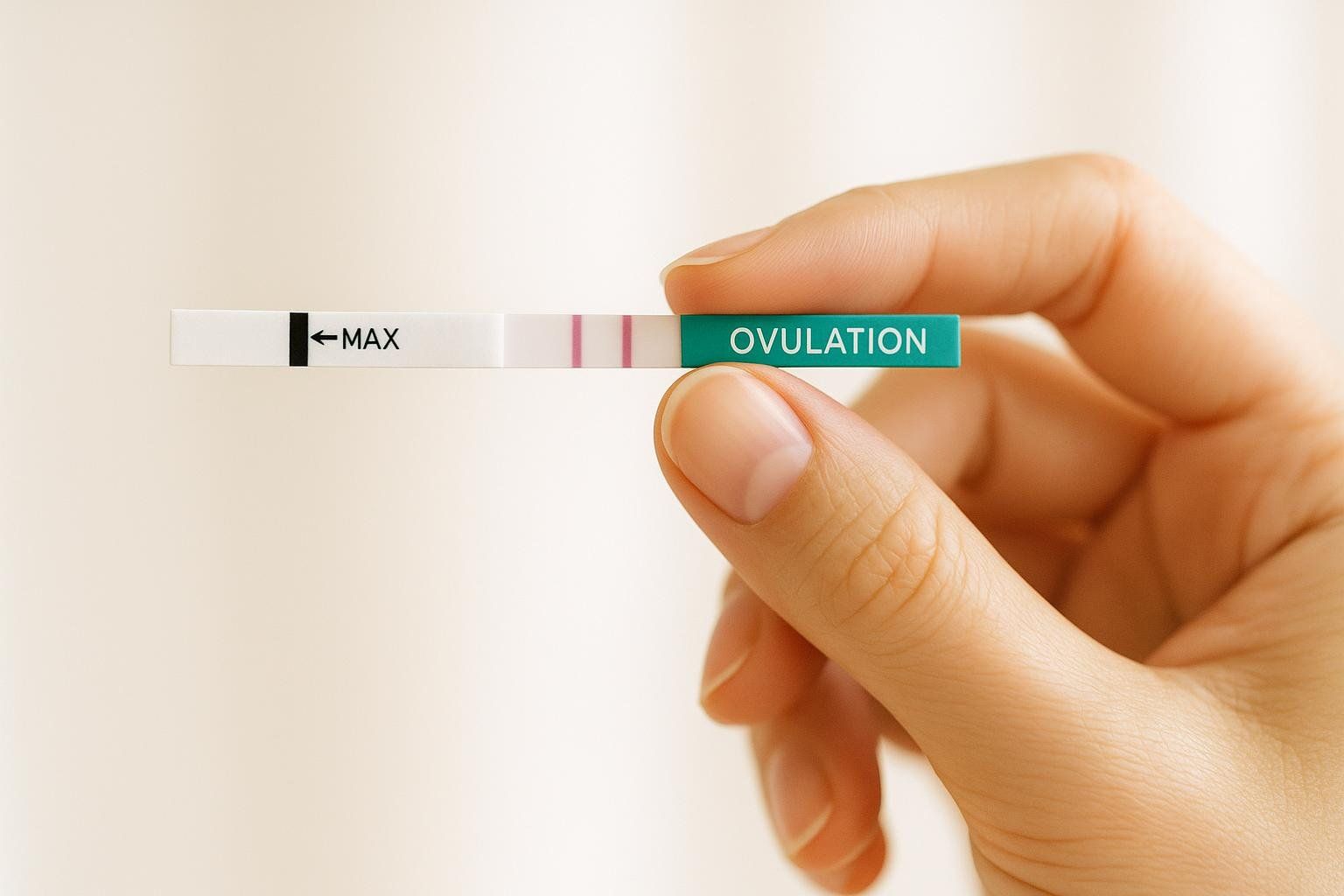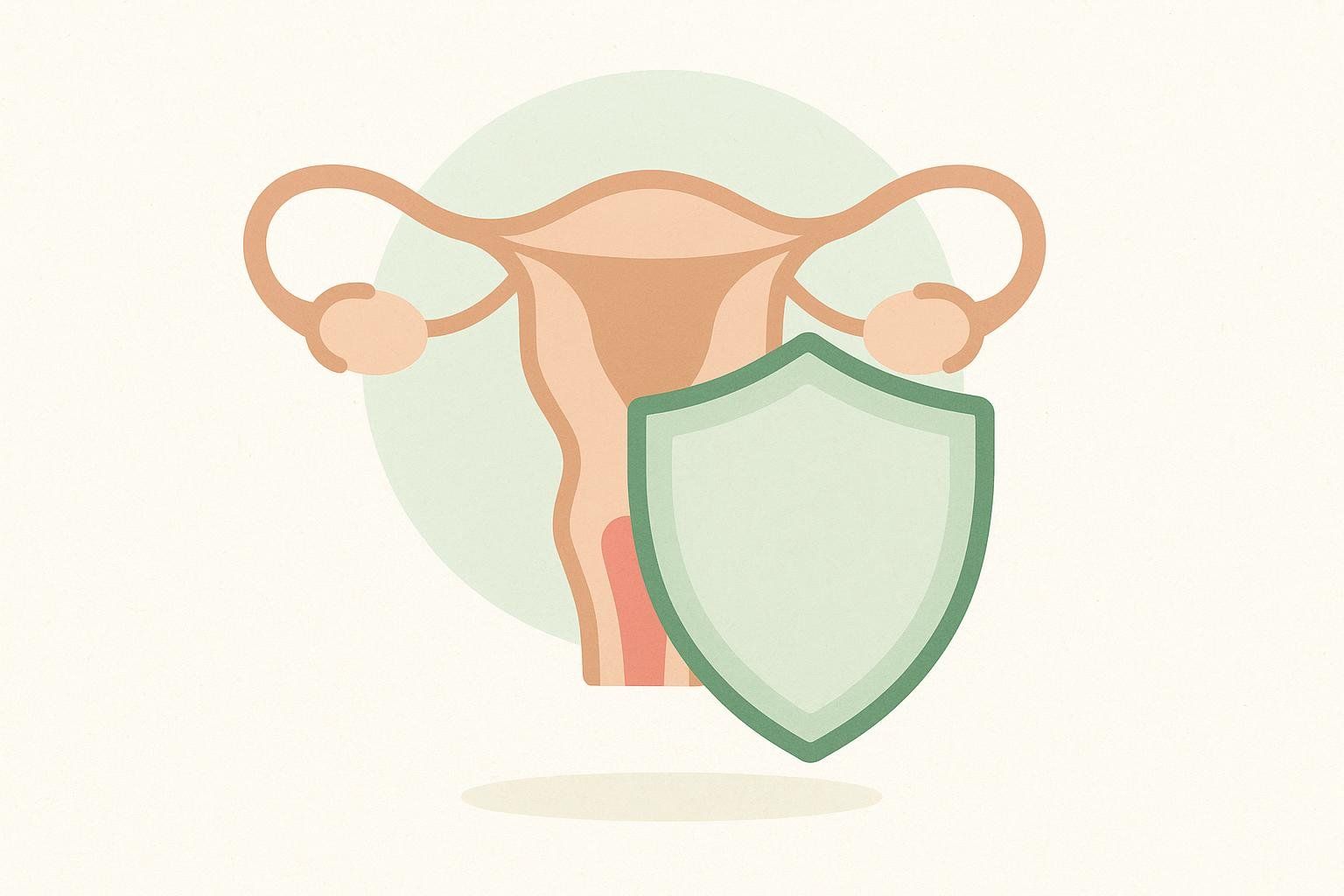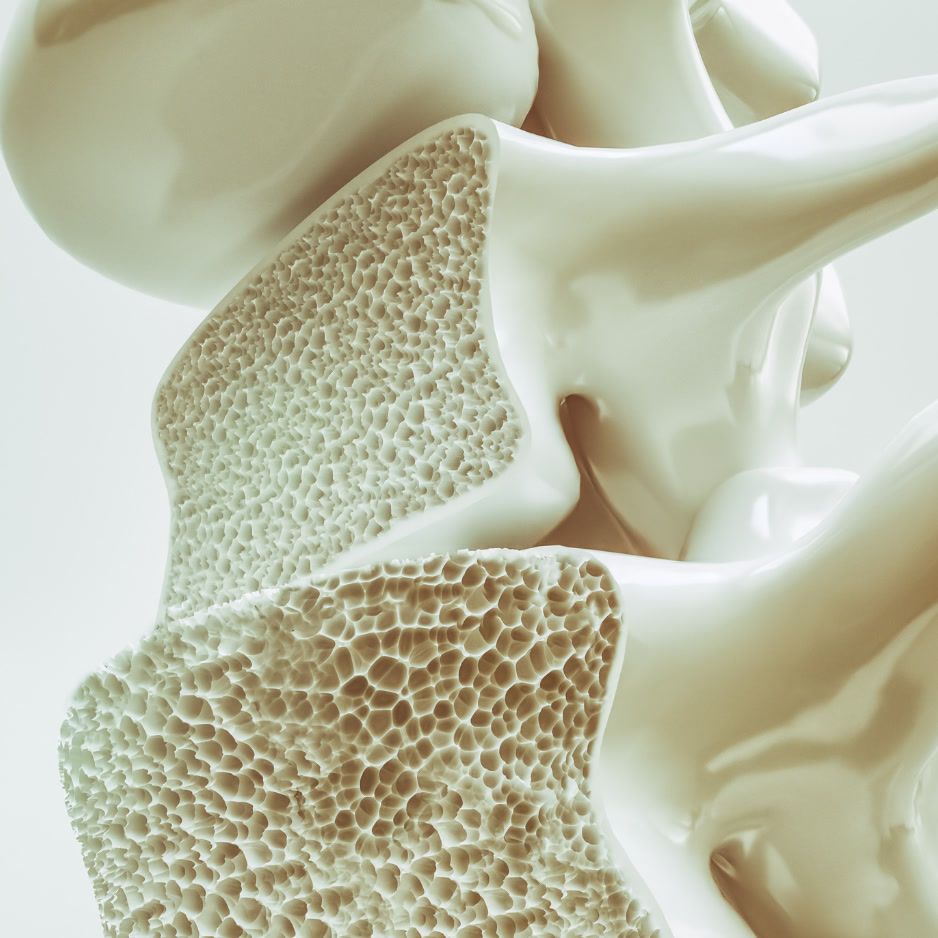Low Progesterone: Symptoms, Testing, and Treatment

Low Progesterone: Symptoms, Testing & Treatment
If you’re dealing with irregular cycles, tough PMS, sleep issues, or fertility setbacks, low progesterone might be part of the story. The fastest way to clarity is a well‑timed blood test and a simple plan you can act on.
30‑second answer: What is “low progesterone,” and what should you do?
- Progesterone rises after ovulation. If it’s too low for your cycle phase (or pregnancy status), you may notice spotting, short cycles, trouble conceiving, mood shifts, or sleep issues (Cleveland Clinic).
- Test at the right time: Get a blood test about 7 days before your next period (your true mid‑luteal—not “day 21” unless your cycle is exactly 28 days) (AAFP letter on timing).
- How to read it (big picture): A mid‑luteal serum level > 3 ng/mL suggests you ovulated that cycle; many labs consider > 10 ng/mL a robust mid‑luteal value—timing still matters because levels pulse through the day (PubMed summary of ASRM opinion; Mayo Clinic Labs guide).
- Choose blood, not saliva: Salivary sex‑steroid tests aren’t reliable for diagnosis or dosing (ACOG Clinical Consensus, 2023).
- When to get help: Under 35 and trying for 12 months (or 6 months if 35+)? Touch base with a specialist—earlier if cycles are very irregular or you’ve had recurrent losses (CDC infertility FAQ).
Bottom line: Start with the right‑timed blood test. Then address root causes and use targeted treatments where evidence supports them.
What does progesterone do (in plain English)?
After ovulation, a temporary gland (the corpus luteum) makes progesterone to:
- Thicken and stabilize the uterine lining so an embryo can implant
- Keep bleeding patterns on track and help regulate cycle length
- Support early pregnancy until the placenta takes over
- Soothe brain pathways that influence mood and sleep (Cleveland Clinic)
Signs and symptoms of low progesterone
These are nonspecific—other conditions can look similar, which is why testing and context matter.
Not pregnant:
- Irregular cycles, short luteal phase, or mid‑cycle spotting
- Trouble conceiving or signs of anovulation
- Mood changes (anxiety, low mood), headaches/migraines
- Sleep issues, night sweats/hot flashes (often tied to estrogen swings)
- Bloating, breast tenderness (Cleveland Clinic; Medical News Today)

Pregnant:
- Spotting/bleeding in early pregnancy
- Signs of threatened miscarriage (Cleveland Clinic; Medical News Today)
Important: Thyroid disease, high prolactin, PCOS, under‑fueling (low energy availability), and perimenopause can mimic these symptoms—get a proper work‑up.
Common causes and risk factors
- Anovulation or irregular ovulation (e.g., PCOS)
- Thyroid dysfunction or hyperprolactinemia
- Perimenopause (erratic ovulation is common; see our guide: Perimenopause: Age, Signs, Timelines & What to Expect)
- Chronic stress or under‑fueling (also known as Relative Energy Deficiency in Sport, or RED‑S), which is common with heavy endurance training (IOC RED‑S update)
- Obesity and aging (can alter ovulation signals)
How to test (and actually trust) your progesterone level
- Get the timing right
- Aim for mid‑luteal—about 7 days before your next period, not a fixed “day 21.” If your cycles are 35 days, mid‑luteal is around day 28 (AAFP letter on timing).
- Choose the right test
- Serum (blood) progesterone is the clinical standard. Saliva testing for sex hormones isn’t accurate enough for diagnosis/dosing (ACOG Clinical Consensus, 2023).

- Know the key cutoffs (with caveats)
- Mid‑luteal > 3 ng/mL suggests ovulation occurred that cycle (PubMed summary of ASRM opinion).
- Many labs consider > 10 ng/mL in mid‑luteal “robust,” but values pulse and timing matters (Mayo Clinic Labs guide).
- In pregnancy, levels vary widely by trimester; clinicians interpret values alongside ultrasound and hCG.
- Pair with ovulation tracking
- LH urine kits, basal body temperature shifts, and peak cervical mucus can help pinpoint ovulation so you time your blood draw well.

- Know when to seek care
- Under 35 and trying for 12 months (or 6 months if 35+)? It’s time for an evaluation—sooner if periods are very irregular or you have other risk factors (CDC infertility FAQ).
Pro tip: Because progesterone is released in pulses, a single number can under‑ or over‑estimate your “true” level. Your clinician may repeat testing or time it carefully.
Treatments and support: What the evidence says
Fertility in natural cycles (without fertility treatments like IVF)

- Fix root causes first: thyroid issues, high prolactin, under‑fueling/RED‑S, or ovulatory disorders like PCOS. Correcting these can normalize luteal function.
- Routine progesterone for “luteal phase deficiency” in natural cycles has no strong evidence of improving pregnancy rates; it isn’t routinely recommended (PubMed summary of ASRM opinion).
Threatened miscarriage (bleeding in early pregnancy)
- In a large RCT (PRISM), vaginal progesterone did not increase live birth overall vs. placebo (NEJM).
- UK guidance recommends vaginal micronized progesterone for women with early pregnancy bleeding who also have one or more prior miscarriages (targeted use, not for everyone) (NICE update).
Perimenopause and menopause symptoms
- For hot flashes/night sweats and sleep disruption, hormone therapy (HT) is the most effective treatment for eligible people. If you have a uterus, you’ll need a progestogen with estrogen to protect the uterine lining (The Menopause Society).
- Benefits (symptom relief, bone protection) and risks (e.g., clots; breast cancer risk varies by regimen and duration) should be weighed with your clinician.

Formulations and testing caveats
- FDA‑approved progesterone options include oral capsules and vaginal formulations. Custom‑compounded “bioidentical” hormones are not proven safer or more effective and shouldn’t be used routinely when approved options exist. Salivary testing to tailor doses is not recommended (ACOG Clinical Consensus, 2023).
- Contraindications to systemic hormone therapy can include a history of certain cancers, blood clots, stroke, or liver disease—review your personal risks with your clinician.
Natural strategies to support healthy ovulation and cycles
There’s no food or herb that instantly “raises progesterone,” but these habits support regular ovulation and overall hormone balance:

- Fuel adequately: Chronic under‑eating can suppress ovulation and shorten the luteal phase (RED‑S). Ensure enough calories and protein (IOC RED‑S update).
- Train smart: Combine regular strength training with low‑intensity cardio (walking, easy cycling) to support metabolic health—without overtraining.
- Manage stress and sleep: Aim for 7–9 hours and consistent sleep/wake times; stress management helps the brain–ovary signaling that controls ovulation.
- For PCOS: Nutrition, physical activity, and weight management can improve ovulation frequency; see our PCOS Diet Guide: Foods, Meal Plan, and Tips.
- Be supplement‑savvy: Products that claim to “boost progesterone” often overpromise. Discuss any supplement plan with a qualified clinician first.

How BodySpec can help (data you can use)
Low progesterone often overlaps with conditions that change body composition and bone health. Tracking these metrics helps you tailor nutrition, training, and medical care:
- PCOS and visceral fat: PCOS often comes with higher visceral fat and altered body composition. A BodySpec DEXA quantifies fat distribution and lean mass so you can personalize your plan as you work with your clinician to address ovulatory health.
- Under‑fueling (RED‑S) and bones: Low energy availability is linked to reduced bone formation. DEXA bone density monitoring can flag changes early so you can adjust fueling and training.
- Perimenopause shifts: Hormone changes can accelerate fat gain and bone loss. Serial DEXA scans show whether HT and strength training are preserving muscle and bone.
Explore more:
- Hormone Testing for Women: What, When & How to Test
- Perimenopause Supplements: An Evidence‑Based Guide
- DEXA Scan for Women: Bone Density and Body Composition
- How to Improve Body Composition During Menopause
- Menopause Weight Gain: Causes and Solutions
Ready to get objective data? Book a BodySpec DEXA scan to track body composition and bone density as you optimize your hormone health.
FAQ
What progesterone level is considered “low”?
There isn’t one universal cut‑off outside pregnancy. Context and timing matter. A mid‑luteal level > 3 ng/mL suggests ovulation occurred; many labs view > 10 ng/mL as a robust mid‑luteal value, but one datapoint can mislead because secretion is pulsatile (PubMed summary of ASRM opinion; Mayo Clinic Labs guide).
Can low progesterone cause miscarriage?
Low levels can accompany nonviable or ectopic pregnancies, but routine progesterone for all early‑pregnancy bleeding didn’t improve live birth in a large trial. Guidelines suggest targeted use for people with bleeding and prior miscarriages—review your specifics with your OB‑GYN (NEJM; NICE update).
Does progesterone therapy help perimenopause symptoms?
For hot flashes/night sweats, hormone therapy (estrogen + a progestogen if you have a uterus) is most effective for eligible people (The Menopause Society).
Is saliva testing accurate for diagnosing low progesterone?
No. Major medical societies advise against salivary sex‑steroid testing for diagnosis or dosing; use serum (blood) testing and clinical assessment (ACOG Clinical Consensus, 2023).
How fast does progesterone therapy work?
It depends on the indication and route. Some people notice changes within weeks, but clinicians typically reassess over weeks to months and adjust as needed.
The bottom line
- Test smart: Time a serum progesterone draw to the mid‑luteal window.
- Think root‑cause first: Address thyroid, prolactin, PCOS, under‑fueling, and perimenopause factors.
- Target treatment: Use progesterone where evidence supports it (e.g., specific threatened‑miscarriage scenarios; HT with uterine protection).
- Track what matters: Use DEXA to monitor muscle, fat (especially visceral fat), and bone density as your plan evolves.
This article is educational and not a substitute for personalized medical advice. Always consult your clinician for diagnosis and treatment decisions.


